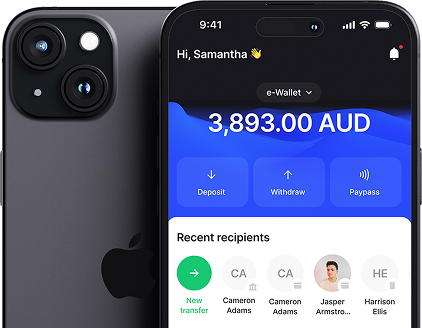Philippines Health Insurance: How to Choose the Right Plan
9 December 2024

How does Philippine Health Insurance Work?
If you’re looking for health insurance in the Philippines, there are a wide range of public and private options to choose from.
In the public system, healthcare facilities range from small rural health stations to large government-funded hospitals and medical centres. Oversight of the country’s health system comes from the Philippine Department of Health, which manages policies, programs and service standards.
One of the key institutions in the public healthcare system is PhilHealth (Philippine Health Insurance Corporation). PhilHealth provides healthcare and risk protection to Filipino citizens and eligible residents. Some of the services it covers include:
– Medical consultations
– Selected medications
– Hospital access
– Public health programs like immunisation and family planning
It also works to improve access to healthcare in priority areas such as mental health and nutrition.
Private Healthcare in the Philippines
Private healthcare in the Philippines is generally considered higher quality than public healthcare. Facilities often have better infrastructure, shorter waiting times and access to more specialised services.
Private health insurance typically offers:
– Greater flexibility in choosing doctors and hospitals
– Faster access to tests and treatments
– Optional add-ons like dental care, maternity, or specialist services
However, access to private care often reflects broader economic and geographic divisions. People in rural or low-income areas may struggle to afford private insurance or find high-level facilities nearby. In contrast, urban areas have a higher concentration of doctors, clinics and hospitals.
How to Sign Up for PhilHealth
If you’re living in the Philippines, signing up for PhilHealth can give you basic coverage and peace of mind. Here’s how the process typically works:
1. Confirm eligibility
– PhilHealth is available to all Filipino citizens, overseas Filipino workers, permanent residents, and some non-Filipino nationals who meet certain criteria.
2. Prepare your documents
– Usually includes a valid ID, passport and proof of local address.
3. Visit a PhilHealth office
– Offices are found throughout the Philippines. You can locate one using the official PhilHealth website.
4. Complete a PhilHealth Member Registration Form (PMRF)
– Provide your name, birthdate, address and contact details.
5. Submit the form and documents
– Once submitted, your membership is processed.
6. Pay your premiums
– Payment details will be provided by PhilHealth.
Once registered, you’ll receive a PhilHealth ID or Identification Number, which gives you access to benefits. Remember to keep your details updated and familiarise yourself with your entitlements.
Note: Eligibility requirements may change, so it’s always best to check the latest information on the PhilHealth website.
Private Health Insurance in the Philippines
If you’re in a position to afford it, private health insurance usually offers broader coverage and a higher level of service.
Here are some important things to consider when choosing a private plan:
Family plans
– Many providers offer bundled family plans, which may cost more monthly but can be better value than insuring each person separately.
– Check if the policy allows for dependents or shared benefit limits.
Age and medical history
– Younger people with no history of major illnesses tend to receive lower premiums.
– Older individuals or those with pre-existing conditions may face higher fees or restrictions.
Emergency cover
– Emergency services often cost extra unless you’ve included them in your policy.
– Be clear about whether your plan covers ambulances, emergency rooms or hospital admissions.
Add-ons and extras
– Many basic plans include general check-ups and lab tests.
– Extras like dental care, mental health support or optical services are usually optional.
Tip: Be as thorough as possible when comparing policies. Read the fine print and ask questions to avoid unexpected exclusions later.
Choosing International Health Insurance in the Philippines
For expats living in the Philippines – particularly in rural areas – international health insurance may be worth considering. While healthcare in major cities like Manila is generally of a high standard, access in rural regions is much more limited.
Because of this, many foreigners opt for international plans that include:
– Medical evacuation coverage to cities like Singapore or Bangkok
– Higher annual benefit limits
– Fewer local restrictions (e.g. per-visit or per-treatment caps)
If you’re planning to start a family, or want coverage for complex treatments like cancer or chronic illness, international health plans often offer more comprehensive support.
Tip: A great resource for comparing global plans is Best Expats Cover, which helps match you with the right provider for your needs in the Philippines.
Popular Healthcare Companies in the Philippines
Here are a few major health insurance providers worth looking into. This is only a starting point – it’s important to compare plans based on your own situation.
Sun Life – Coverage available up to age 100
Maxicare – More than 20,000 affiliated doctors nationwide
MediCard – Access to top-tier hospitals with many of their plans
IntelliCare – Over one million members since 1995
Pacific Cross – Offers flexible plans for travellers and expats in the Philippines
Conclusion
Choosing the right health insurance plan in the Philippines depends on your needs, your budget and how long you plan to stay.
Here are a few questions to guide your decision:
– Do you need individual or family coverage?
– Will you be based in a rural or urban area?
– Are you planning for any major health needs, like maternity or ongoing conditions?
– Would international coverage offer more peace of mind?
Take the time to compare plans, ask questions, and look closely at benefit limits and exclusions.
Tip: If you’re supporting family members in the Philippines from overseas, remember that e-Pocket makes it easy to send money securely, with excellent exchange rates and no hidden fees. We also specialise in large money transfers to the Philippines.
We hope this guide helps you find the coverage that suits you best. Stay safe and well wherever you are.




